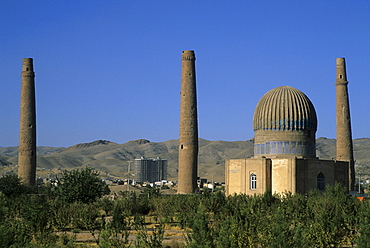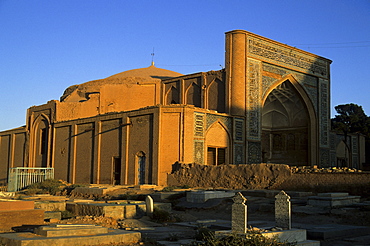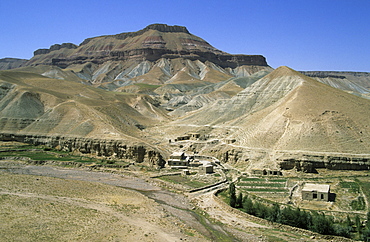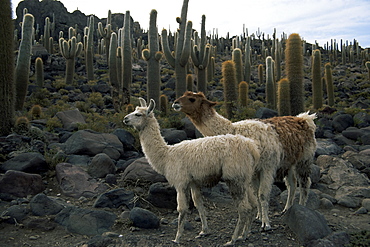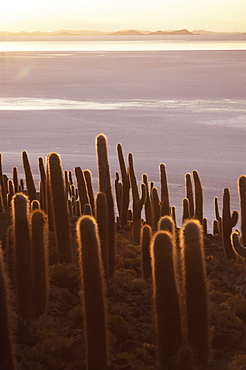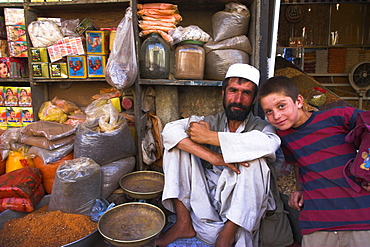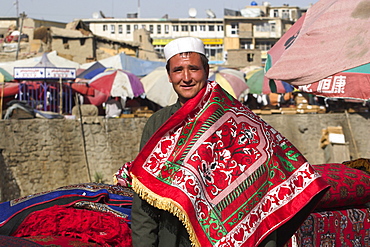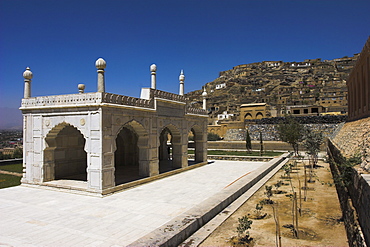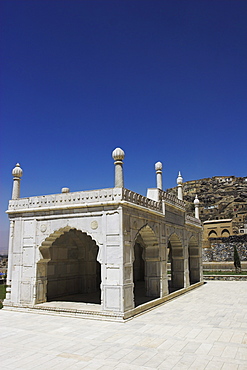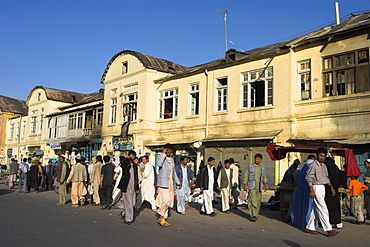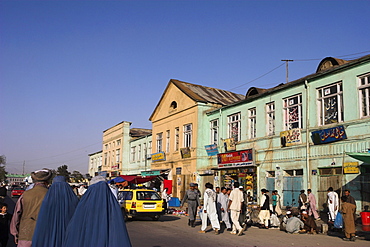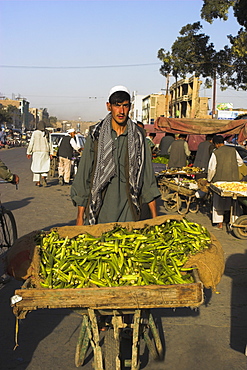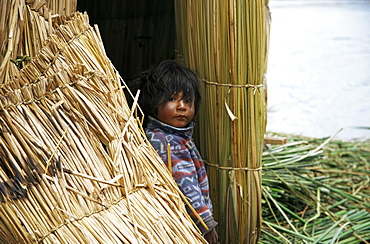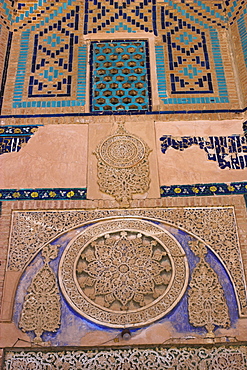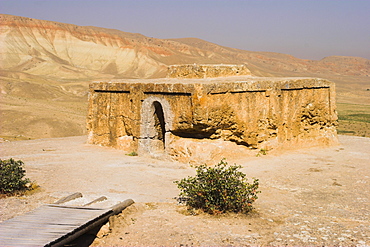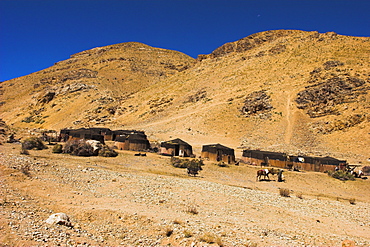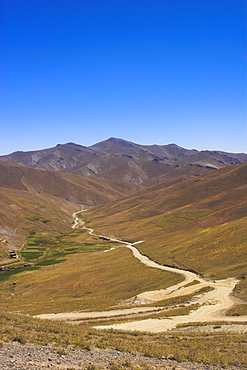Results
« Previous 1 … 21 22 23 24 25 … 30 Next »
2950 results found
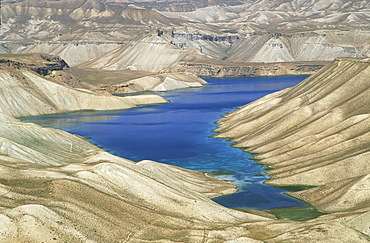
One of the crater lakes at Band-E-Amir (Dam of the King), Afghanistan's first National Park set up in 1973 to protect the five lakes, believed by locals to have been created by the Prophet Mohammed's son-in-law Ali, making them a place of pilgrimage, Afghanistan, Asia
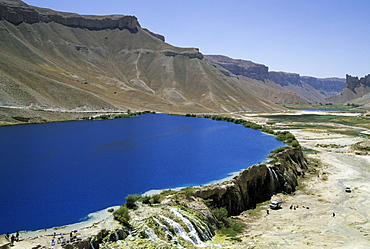
Band-i-Zulfiqar, the main lake at Band-E-Amir (Dam of the King), Afghanistan's first National Park set up in 1973 to protect the five lakes, believed by locals to have been created by the Prophet Mohammed's son-in-law Ali, making them a place of pilgrimage, Afghanistan, Asia
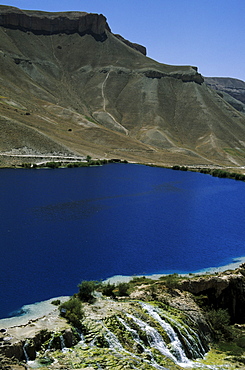
Band-i-Zulfiqar, the main lake at Band-E-Amir (Dam of the King), Afghanistan's first National Park set up in 1973 to protect the five lakes, believed by locals to have been created by the Prophet Mohammed's son-in-law Ali, making them a place of pilgrimage, Afghanistan, Asia
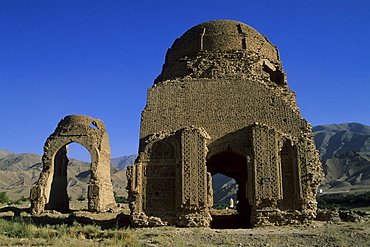
Ghorid (12th century) ruins, believed to be a Mausoleum or Madrassa, Chist-I-Sharif, Afghanistan, Asia
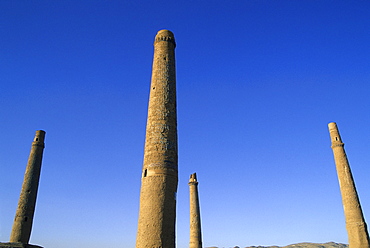
Four of the six remaining minarets marking the corners of the long gone Madrassa built by the last Timurid ruler Sultan Husain Baiquara, within the Mousallah Complex of Gaur Shad's mausoleum, Herat, Afghanistan, Asia
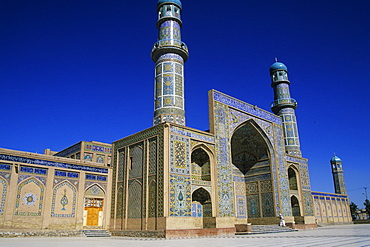
Friday Mosque (Masjet-eJam), laid out in 1200 by the Ghorid Sultan Ghiyasyddin, on the site of an earlier 10th century mosque, restoration started in 1943, Herat, Afghanistan, Asia
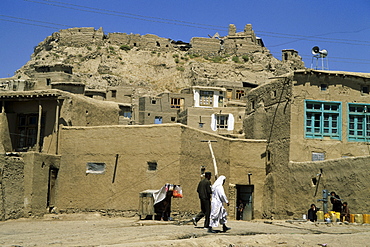
Houses within the old city walls below the Citadel, rebuilt since its destruction in the First Anglo Afghan war as used as a military garrison, Ghazni, Afghanistan, Asia
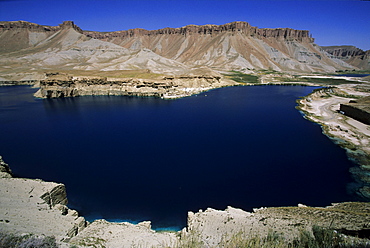
Band-i-Zulfiqar, the main lake at Band-E-Amir (Dam of the King), Afghanistan's first National Park set up in 1973 to protect the five lakes, believed by locals to have been created by the Prophet Mohammed's son-in-law Ali, making them a place of pilgrimage, Afghanistan, Asia
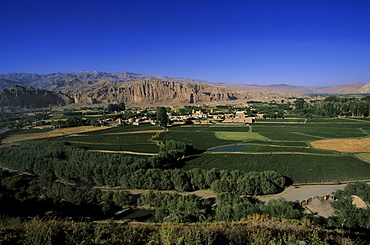
View of Bamiyan showing cliffs with two empty niches where the famous carved Buddhas stood, since destroyed by the Taliban, UNESCO World Heritage Site, Afghanistan, Asia

Inside The Citadel (Qala-i-Ikhtiyar-ud-din), originally built by Alexander the Great, but built in its present form by Malik Fakhruddin in 1305 AD, Herat, Afghanistan, Asia
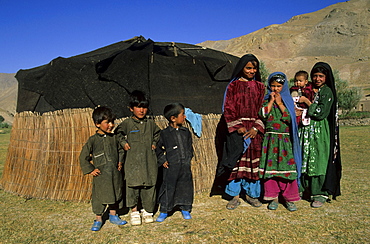
Children of the semi-nomadic Aimaq people in front of summer yurts, Pal-Kotal-i-Guk, between Chakhcharan and Djam, Afghanistan, Asia
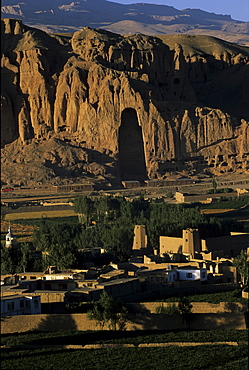
Empty niche where one of the famous carved Buddhas once stood, destroyed by the Taliban, Bamiyan, UNESCO World Heritage Site, Afghanistan, Asia
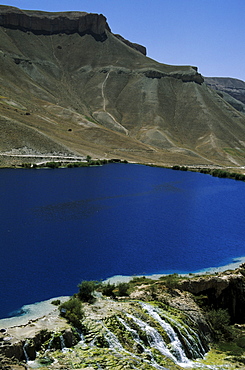
Band-i-Zulfiqar, the main lake at Band-E-Amir (Dam of the King), Afghanistan's first National Park set up in 1973 to protect the five lakes, believed by locals to have been created by the Prophet Mohammed's son-in-law Ali, making them a place of pilgrimage, Afghanistan, Asia
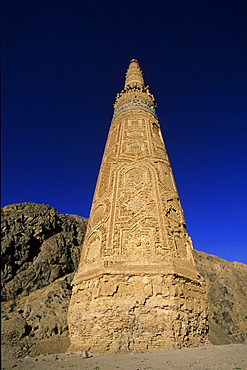
The 65 metre tall Minaret of Jam, built by Sultan Ghiyat Ud-Din Muhammad ben San, in around 1190, with Kufic script and verses of the Koran on the exterior, UNESCO World Heritage Site, Ghor Province, Afghanistan, Asia

Doorway at the shrine of Khwaja Abdulla Ansari, Sufi poet and philosopher born in Herat in 1006, Gazar Gah, Herat, Afghanistan, Asia
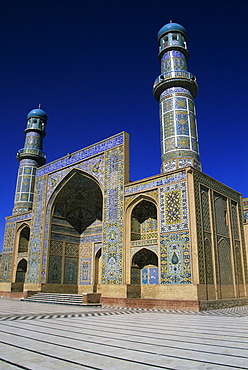
Friday Mosque (Masjet-eJam), restored since 1943, originally laid out in the year 1200 by the Ghorid Sultan Ghiyasyddin on the site of an earlier 10th century mosque, Herat, Afghanistan, Asia
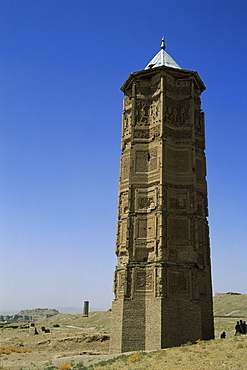
The minaret of Bahram Shah, one of two minarets built by Sultan Mas'ud III and Bahram Shah with square Kufic and Noshki script, that served as models for the minaret of Jam, and believed to have originally been part of mosques, Ghazni, Afghanistan, Asia
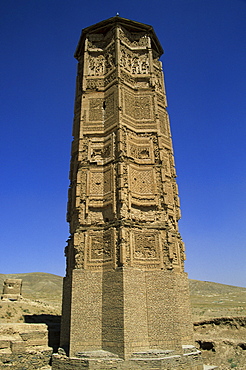
The minaret of Sultan Mas'ud III, one of two minarets built by Sultan Mas'ud III and Bahram Shah with square Kufic and Noshki script, that served as models for the minaret of Jam, and believed to have originally been part of mosques, Ghazni, Afghanistan, Asia
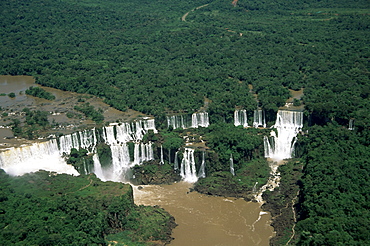
Aerial view of the Iguassu Falls, Iguassu National Park, UNESCO World Heritage Site, Parana, Brazil, South America
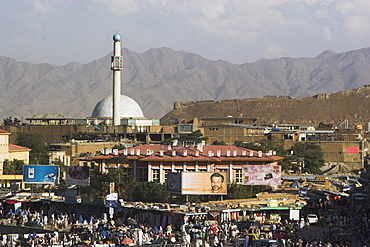
City centre and walls of Bala Hissar, citadel or fortress dating back to the 5th century AD, Kabul, Afghanistan, Asia
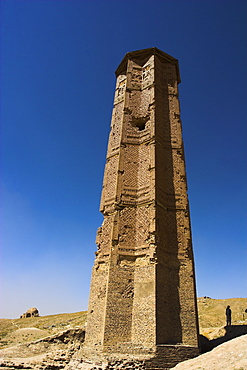
Man looking at Minaret of Bahram Shah one of two early 12th century minarets, Ghazni, Afghanistan, Asia
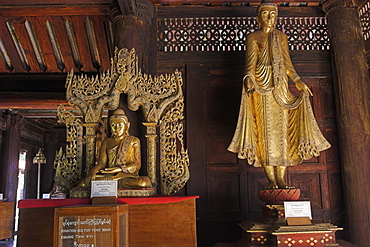
Buddha images, Youqson Kyaung (Yoke-son), the oldest surviving wooden monastery in the Bagan area now a museum, containing religious objects from the Konbaung era, Salay (Sale), Myanmar (Burma), Asia
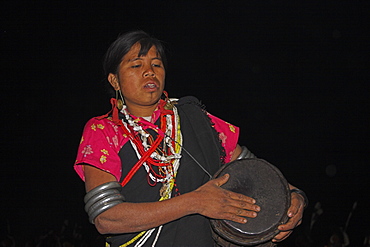
Naga lady dancing and playing drum, Naga New Year festival, Lahe village, Sagaing Division, Myanmar (Burma), Asia
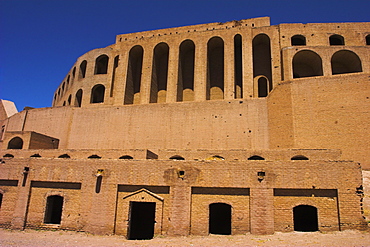
Inside the Citadel (Qala-i-Ikhtiyar-ud-din), originally built by Alexander the Great, but in its present form by Malik Fakhruddin in 1305AD, Herat, Herat Province, Afghanistan, Asia
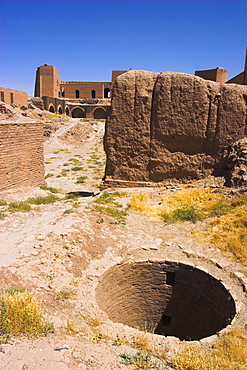
Well inside the Citadel (Qala-i-Ikhtiyar-ud-din), originally built by Alexander the Great, but in its present form by Malik Fakhruddin in 1305AD, Herat, Herat Province, Afghanistan, Asia

Minaret supported by steel cables to prevent it from collapse, a project undertaken by UNESCO and local experts in 2003, The Mousallah Complex, Herat, Herat Province, Afghanistan, Asia

The Friday Mosque or Masjet-eJam, built in the year 1200 by the Ghorid Sultan Ghiyasyddin on the site of an earlier 10th century mosque, Herat, Herat Province, Afghanistan, Asia

Inside the Citadel (Qala-i-Ikhtiyar-ud-din), originally built by Alexander the Great, but in its present form by Malik Fakhruddin in 1305AD, Herat, Herat Province, Afghanistan, Asia

Tourist climbing into the minaret by a window, 12th Century Minaret of Jam, UNESCO World Heritage Site, Ghor (Ghur) (Ghowr) Province, Afghanistan, Asia
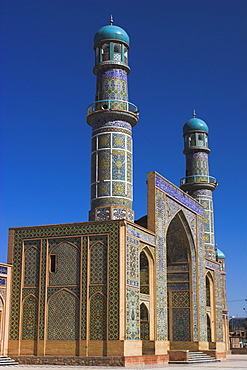
The Friday Mosque or Masjet-eJam, built in the year 1200 by the Ghorid Sultan Ghiyasyddin on the site of an earlier 10th century mosque, Herat, Herat Province, Afghanistan, Asia

The Friday Mosque or Masjet-eJam, built in the year 1200 by the Ghorid Sultan Ghiyasyddin on the site of an earlier 10th century mosque, Herat, Herat Province, Afghanistan, Asia
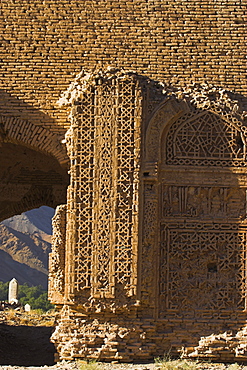
Twelfth century Ghorid ruins believed to be a mausoleum or madrassa, Jam to Obay, Chist-I-Sharif, Ghor (Ghur) (Ghowr) province, Afghanistan, Asia
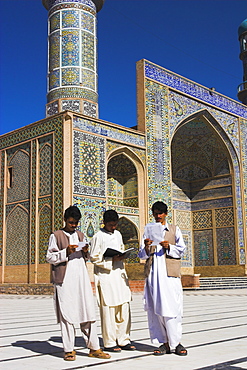
Men reading in front of the Friday Mosque or Masjet-eJam, built in the year 1200 by the Ghorid Sultan Ghiyasyddin on the site of an earlier 10th century mosque, Herat, Herat Province, Afghanistan, Asia

The Friday Mosque or Masjet-eJam, built in the year 1200 by the Ghorid Sultan Ghiyasyddin on the site of an earlier 10th century mosque, Herat, Herat Province, Afghanistan, Asia
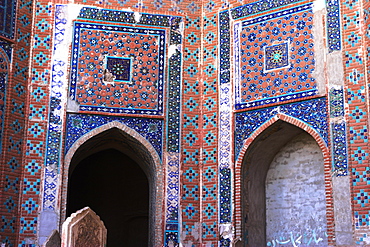
Timurid decoration, main Iwan of the interior courtyard, Sufi shrine of Gazargah, Herat, Herat Province, Afghanistan, Asia

Lady pilgrim in blue burqa sitting in doorway at Sufi shrine of Gazargah, Herat, Herat Province, Afghanistan, Asia
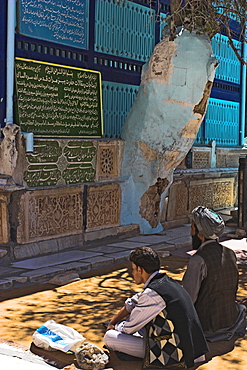
Pilgrims in front of tomb of the 11th century Sufi poet Abdullah Ansari, courtyard, Sufi shrine of Gazargah, Herat, Herat Province, Afghanistan, Asia
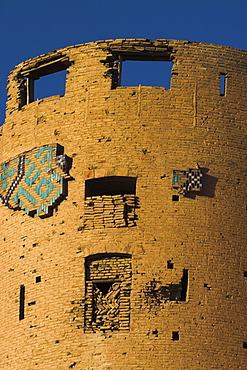
Timurid tilework on tower of the Citadel (Qala-i-Ikhtiyar-ud-din), originally built by Alexander the Great, but in its present form by Malik Fakhruddin in 1305AD, Herat, Herat Province, Afghanistan, Asia
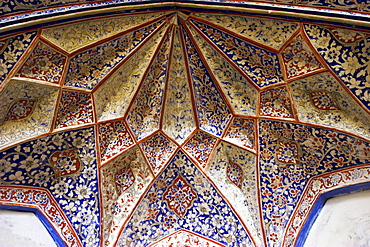
The mihrab in the Friday Mosque or Masjet-eJam, built in the year 1200 by the Ghorid Sultan Ghiyasyddin on the site of an earlier 10th century mosque, Herat, Herat Province, Afghanistan, Asia

The Citadel (Qala-i-Ikhtiyar-ud-din), originally built by Alexander the Great, but in its present form by Malik Fakhruddin in 1305AD, Herat, Herat Province, Afghanistan, Asia

The Citadel (Qala-i-Ikhtiyar-ud-din), originally built by Alexander the Great, but in its present form by Malik Fakhruddin in 1305AD, Herat, Herat Province, Afghanistan, Asia
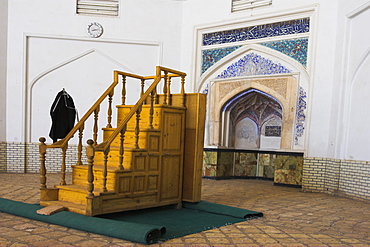
The mihrab in the Friday Mosque or Masjet-eJam, built in the year 1200 by the Ghorid Sultan Ghiyasyddin on the site of an earlier 10th century mosque, Herat, Herat Province, Afghanistan, Asia
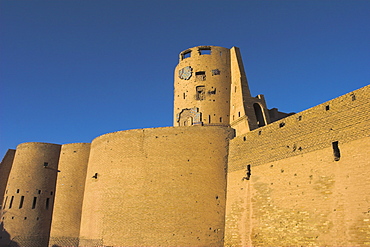
Timurid tilework on a tower of The Citadel (Qala-i-Ikhtiyar-ud-din), originally built by Alexander the Great, but in its present form by Malik Fakhruddin in 1305AD, Herat, Herat Province, Afghanistan, Asia
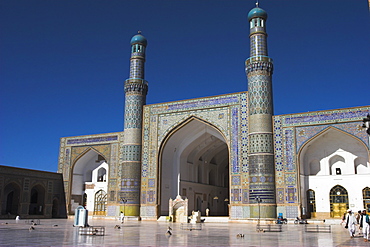
Courtyard of the Friday Mosque or Masjet-eJam, built in the year 1200 by the Ghorid Sultan Ghiyasyddin on the site of an earlier 10th century mosque, Herat, Herat Province, Afghanistan, Asia
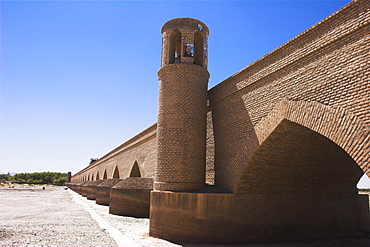
Pul-I-Malan, an ancient bridge of 15 arches now reconstructed, Herat, Herat Province, Afghanistan, Asia
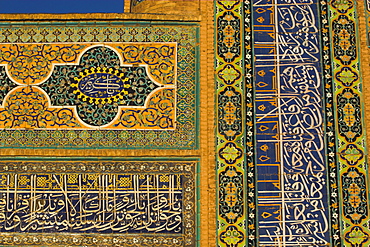
Detail of tilework on the Friday Mosque or Masjet-eJam, built in the year 1200 by the Ghorid Sultan Ghiyasyddin on the site of an earlier 10th century mosque, Herat, Herat Province, Afghanistan, Asia
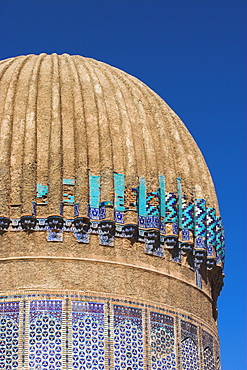
Ribbed dome of the mausoleum of Gaur Shad, wife of the Timurid ruler Shah Rukh, son of Tamerlane, The Mousallah Complex, Herat, Herat Province, Afghanistan, Asia
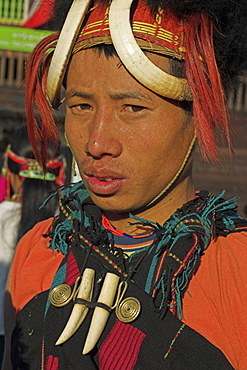
Naga man wearing tiger teeth necklace and headdress of woven cane decorated with wild boar teeth, bear fur, red dyed goats hair, Naga New Year Festival, Lahe village, Sagaing Division, Myanmar (Burma), Asia
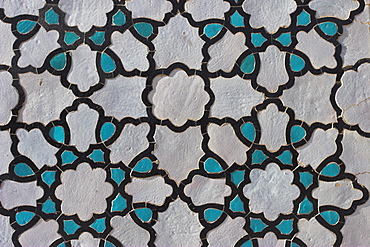
Detail of tilework on the Friday Mosque or Masjet-eJam, built in the year 1200 by the Ghorid Sultan Ghiyasyddin on the site of an earlier 10th century mosque, Herat, Herat Province, Afghanistan, Asia
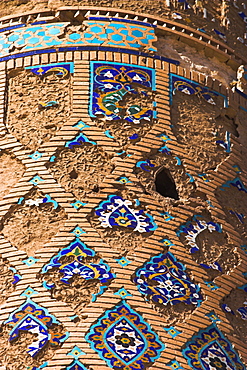
Tilework and mortar hole on minaret beside Gaur Sahd's mausoleum, The Mousallah Complex, Herat, Herat Province, Afghanistan, Asia

Detail of tilework on the Friday Mosque or Masjet-eJam, built in the year 1200 by the Ghorid Sultan Ghiyasyddin on the site of an earlier 10th century mosque, Herat, Herat Province, Afghanistan, Asia
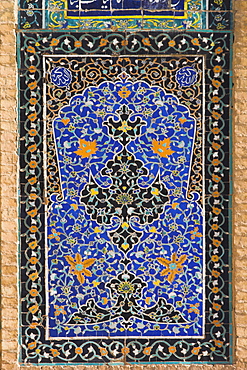
Detail of tilework on the Friday Mosque or Masjet-eJam, built in the year 1200 by the Ghorid Sultan Ghiyasyddin on the site of an earlier 10th century mosque, Herat, Herat Province, Afghanistan, Asia
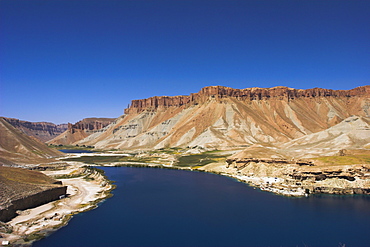
Band-I-Zulfiqar the main lake, Band-E- Amir (Bandi-Amir) (Dam of the King) crater lakes, Afghanistan's first National Park, Bamian province, Afghanistan, Asia
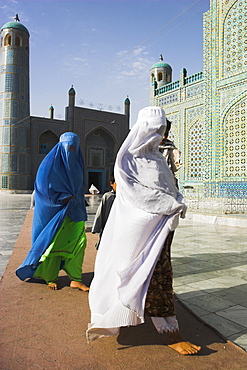
Pilgrims at the shrine of Hazrat Ali, who was assassinated in 661, Mazar-I-Sharif, Balkh province, Afghanistan, Asia
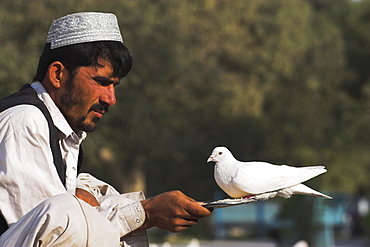
Man feeding the famous white pigeons, Shrine of Hazrat Ali, Mazar-I-Sharif, Balkh province, Afghanistan, Asia
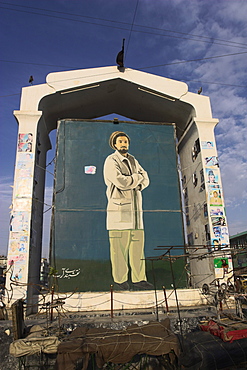
Memorial plaque of assassinated Mujahadin leader Ahmad Shah Massoud know as the ' Lion of Panshir' an Afghan National Hero, situated opposite the Shrine of Hazrat Ali, Mazar-I-Sharif, Balkh province, Afghanistan, Asia
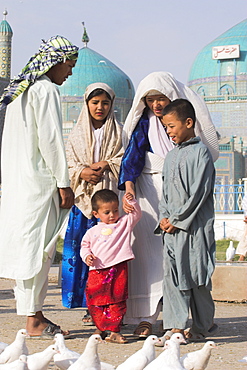
Family looking at famous white pigeons at the shrine of Hazrat Ali, who was assassinated in 661, Mazar-I-Sharif, Balkh province, Afghanistan, Asia
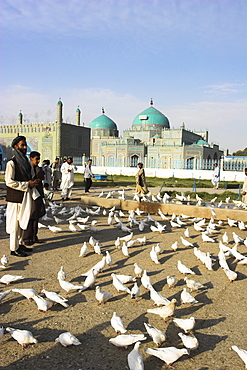
People feeding the famous white pigeons, Shrine of Hazrat Ali, Mazar-I-Sharif, Balkh province, Afghanistan, Asia
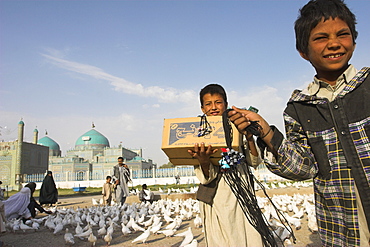
Street boys stand amongst the famous white pigeons with the necklaces they sell to make a living, Shrine of Hazrat Ali, Mazar-I-Sharif, Balkh province, Afghanistan, Asia
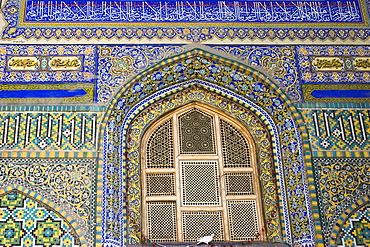
Famous white pigeon sits below window, Shrine of Hazrat Ali, who was assassinated in 661, Mazar-I-Sharif, Balkh province, Afghanistan, Asia
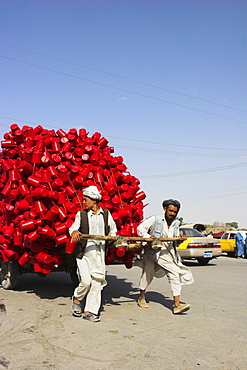
Men pulling wooden cart piled high with red water containers along road, Mazar-I-Sharif, Balkh province, Afghanistan, Asia
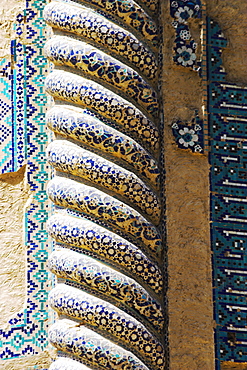
Unique Timurid corkscrew pillars of the Shrine of Khwaja Abu Nasr Parsa, Balkh (Mother of Cities), Balkh province, Afghanistan, Asia

Shrine at No-Gonbad Mosque (Mosque of Nine Cupolas) also known as Khoja Piada or Masjid-e Haji Piyada (Mosque of the Walking Pilgrim), dating from the 9th centruy AD, the earliest Islamic monument in the country, Balkh (Mother of Cities), Balkh province, Afghanistan, Asia
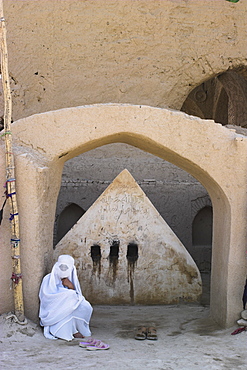
Lady visiting a possible early 8th Century tomb of a 19th century AD saint behind mosque for blesssing for childbirth/sickness, No-Gonbad Mosque also known as Khoja Piada or Masjid-e Haji Piyada, Balkh, Balkh province, Afghanistan, Iraq, Middle East

Shrine at No-Gonbad Mosque (Mosque of Nine Cupolas) also known as Khoja Piada or Masjid-e Haji Piyada (Mosque of the Walking Pilgrim), dating from the 9th centruy AD, the earliest Islamic monument in the country, Balkh (Mother of Cities), Balkh province, Afghanistan, Asia
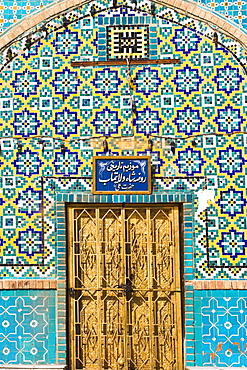
Tiling round door, Shrine of Hazrat Ali, who was assissinated in 661, Mazar-I-Sharif, Balkh province, Afghanistan, Asia
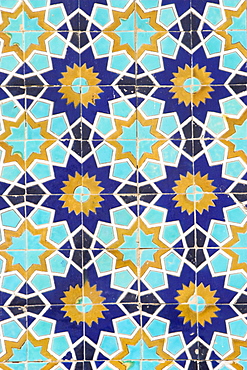
Tilework detail, Shrine of Hazrat Ali, who was assassinated in 661, Mazar-I-Sharif, Balkh province, Afghanistan, Asia
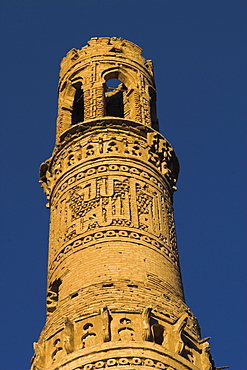
Detail of the 12th century Minaret of Jam at dawn, UNESCO World Heritage Site, Ghor (Ghur, Ghowr) Province, Afghanistan, Asia
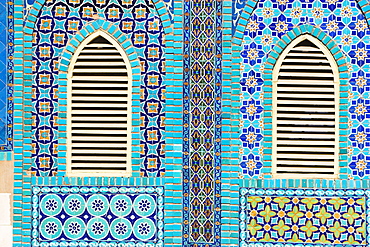
Tiling round shuttered windows, Shrine of Hazrat Ali, who was assissinated in 661, Mazar-I-Sharif, Balkh province, Afghanistan, Asia
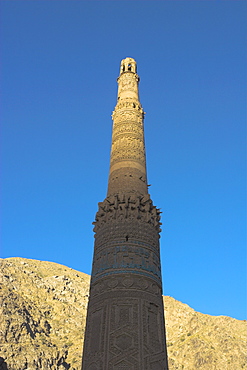
The 65 metre tall 12th century Minaret of Jam at dawn, UNESCO World Heritage Site, Ghor (Ghur, Ghowr) Province, Afghanistan, Asia
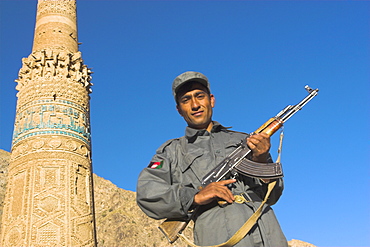
Security guard in front of the 12th century Minaret of Jam, UNESCO World Heritage Site, Ghor (Ghur, Ghowr) Province, Afghanistan, Asia
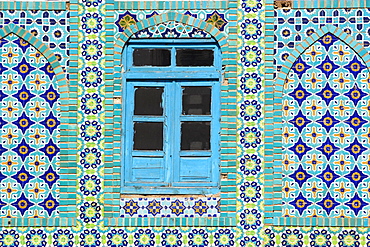
Tiling round blue window, Shrine of Hazrat Ali, who was assissinated in 661, Mazar-I-Sharif, Balkh province, Afghanistan, Asia
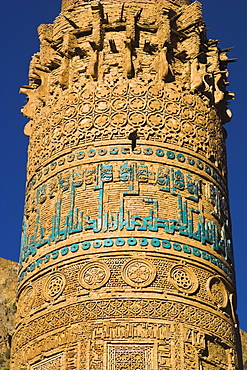
Detail of decoration on minaret including Kufic inscription in turquoise glazed tiles, 12th century Minaret of Jam, UNESCO World Heritage Site, Ghor (Ghur, Ghowr) Province, Afghanistan, Asia
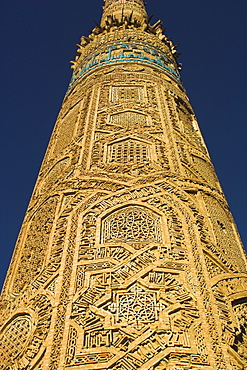
Detail of decoration on minaret including Kufic inscription in turquoise glazed tiles, 12th century Minaret of Jam, UNESCO World Heritage Site, Ghor (Ghur, Ghowr) Province, Afghanistan, Asia
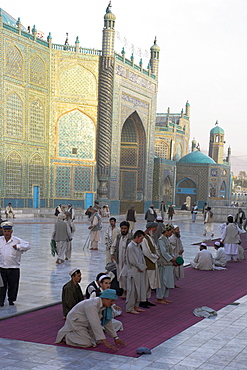
Pilgrims outside the Shrine of Hazrat Ali, who was assissinated in 661, Mazar-I-Sharif, Balkh province, Afghanistan, Asia

Timurid decoration, main Iwan of the interior courtyard, Sufi shrine of Gazargah, Herat, Herat Province, Afghanistan, Asia
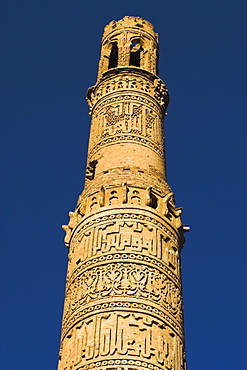
The 12th century Minaret of Jam, UNESCO World Heritage Site, Ghor (Ghur, Ghowr) Province, Afghanistan, Asia
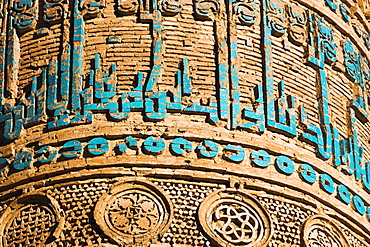
Detail of decoration on minaret dating from 12th century, including Kufic inscription in turquoise glazed tiles, Minaret of Jam, UNESCO World Heritage Site, Ghor (Ghur, Ghowr) Province, Afghanistan, Asia
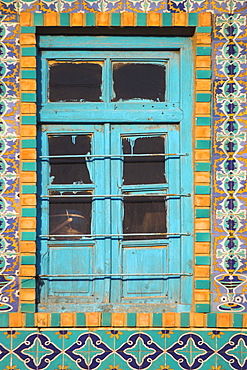
Tiling round blue window, Shrine of Hazrat Ali, who was assissinated in 661, Mazar-I-Sharif, Balkh province, Afghanistan, Asia
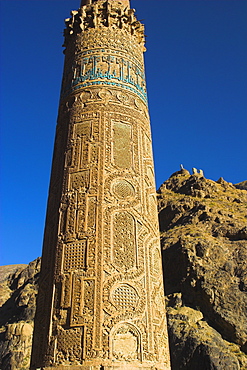
Detail of the 12th century Minaret of Jam, including Kufic inscription in turquoise glazed tiles, Quasr Zarafshan in background, UNESCO World Heritage Site, Ghor (Ghur, Ghowr) Province, Afghanistan, Asia
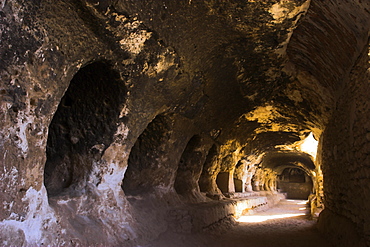
Corridor off which monks' living quarters were carved in cave 2, Takht-I-Rusam (Rustam's throne), part of a Buddhist stupa-monastery complex dating from the Kushano-Sasanian period 4th-5th century AD, Samangan Province, Afghanistan, Asia
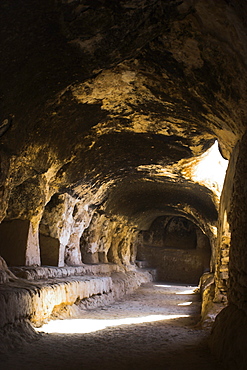
Corridor off which monks' living quarters were carved in cave 2, Takht-I-Rusam (Rustam's throne), part of a Buddhist stupa-monastery complex dating from the Kushano-Sasanian period 4th-5th century AD, Samangan Province, Afghanistan, Asia
